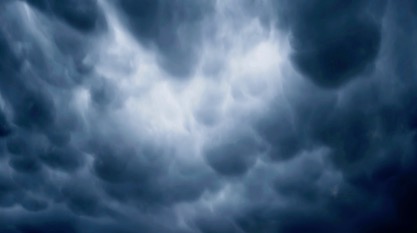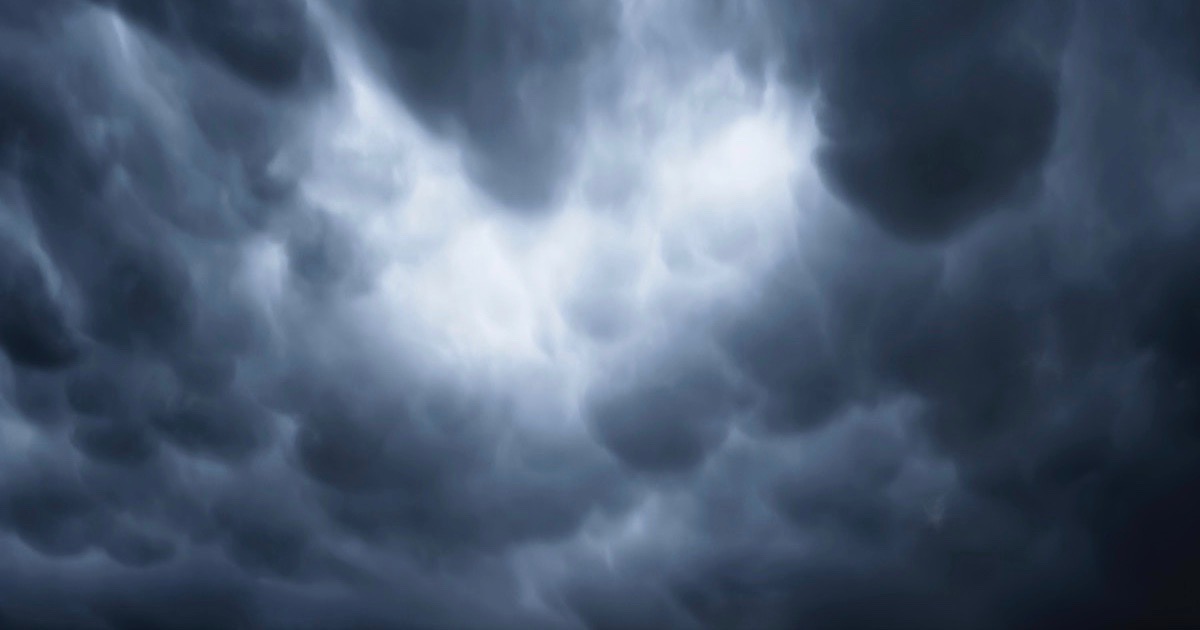 Evolution
Evolution
Darwinism as Pantheism or Vitalism


Scientific materialism, with Darwin as its prophet, is supposed to be free of mind or will. Yet you often find Darwinists writing as if life wants to evolve, if the environment would just give it a chance.
A good illustration can be seen in a paper in Scientific Reports, one of the open-access journals of the Springer-Nature company. Authors Jie Long, Shixi Zhang and Kunli Luo give their paper a ho-hum materialistic title, “Cryogenian magmatic activity and early life evolution.” Yet hiding in the language are dreams of life-forms waiting for the ingredients to arrive, so that they can make themselves into a city.
Data from the Qinling Orogenic Belt in China indicate that a strong magmatic-volcanic event on the Snowball Earth during the Cryogenian age (approximately 720–635 million years ago) was followed by a dynamic period of accelerated evolution of early life through the Ediacaran period. The studied volcanics of the Cryogenian Yaolinghe group are mainly represented by andesite, dacite and rhyolite, with minor amounts of basalt, trachy andesite and trachyte towards the top, which formed in the environment of an active island arc related to a continental margin. Compared with average felsic volcanics, the studied Cryogenian marine volcanic strata are enriched (1.5–30.6 times) in Co, Cr, Bi, Ni, Se, Ga, As, Cu, Ba, V, and Zn. Elemental concentrations (P, Cd, Co, Ni, and Se) of the studied volcanics are more than 5–26.4 times those in the contemporaneous Liantuo tillite. We propose that Cryogenian magmatic and volcanic activity increased the flux of some trace nutritional elements into the oceans which possibly provided essential nutrients for the development of early life. [Emphasis added.]
Here come the ingredients we ordered! Life-forces, join together! Let us develop!
Logic and Philosophy
Scientists are supposed to know some basic logic and philosophy. For one thing, association is not causation. For another, factors can be necessary, but not sufficient. Additionally, scientific explanation should refer to laws, and be quantified using mathematics. In that regard, there is precious little math in the paper, and no mention of natural law. The only graph measurements concern elemental abundances in rocks. The rest is the association fallacy. They found volcanic rocks in a hypothetical cold period (the Cryogenian, “cold genesis” or end of the hypothetical Snowball Earth period). Since evolution is a fact to them, and life seems to have proliferated about that time,
the Cryogenian played a key role in the evolutionary and developmental history of early life as a link between the preceding and following periods. Before the Cryogenian period, life was simple organisms, but afterward, evolutionary processes were characterized by a progressively accelerated stage, with life becoming more complex from 635 to 520 million years ago.
Flour, Eggs, and Ovens
By universal experience, everyone knows that ingredients don’t organize themselves into complex structures. Flour, eggs, and ovens alone do not make themselves into a cake. Steel, glass, and lumber alone do not construct buildings. How can these scientists presume to think that new deliveries of cobalt, vanadium, zinc, and nickel will turn microbes into complex organisms? Even if the temperature changes from cold to hot, it’s not going to happen. In Illustra’s film Origin, Ann Gauger puts it bluntly:
If I put amino acids in a test tube in my lab, even if I added heat and shook it up real well, and kept doing that for a hundred years, or a thousand years, or ten thousand years, or a million years, nothing would happen.
The only way these presumed materialists can make their claim is to presuppose some kind of world-soul that drives ingredients to become cakes, skyscrapers, and complex organisms. Did the volcanics bring more essential ingredients in? Terrific. The life-force, wanting to develop into complex organisms, was no longer held back by a shortage of necessary elements.
The scientists might just be arguing in reverse: Since life proliferated around the time these volcanics appeared, the new abundance of elements might have facilitated their development. This begs the question of evolution, but absolves them of spiritualizing evolution, right? Well, pantheism and vitalism both presume that invisible factors drive the organization of material substances into something different from lifeless matter itself. Such ideas are incompatible with scientific materialism. Natural selection (not a law of nature, but a post-hoc rationalization) is the Darwinists’ invisible factor. If it is a selector, it has a driving intention. If it is not a selector, it collapses into chance, undermining the authors claim to be writing “Scientific Reports.” Science is supposed to involve causation, not chance.
Getting Away with It
If they had testable methods employing natural laws as causes, they might get away with it: “In an aqueous environment enriched with 30.6 times the concentration of pre-Cryogenian Co, Cr, Bi, Ni, Se, Ga, As, Cu, Ba, V, and Zn, under increasing temperature, a microbe will become Dickinsonia.” That will not happen, either. But it can happen in the spiritualized imagination of a pantheist or vitalist.
Other indications of spiritualized materialism can be seen in frequent invocations of the power of suggestion. This paper has plenty of those:
- “Paleontologists interested in studying the stratigraphy and sedimentology of the Cryogenian glaciation sediment have suggested that the Sturtian and Marinoan glaciations had an important effect on early biological evolution…”
- “It has been suggested that some trace nutrient elements might have contributed to biological evolution throughout geological history….”
- “There have been few reports on the trace element compositions in whole stratigraphic sequences of Cryogenian marine volcanic strata as well as little research into the possible relationship between these elements and early biological evolution during this period.”
- “In this paper, we report the variations of trace elements of marine volcanic sediments from the Cryogenian strata and their possible correlations with the evolution of early life.”
- “We propose that Cryogenian magmatic and volcanic activity increased the flux of some trace nutritional elements into the oceans which possibly provided essential nutrients for the development of early life.”
- “The variation and diversification of these organisms from ca. 750 to 541 Ma20 may have corresponded to the trend of increasing Se, As and Ba contents in rocks from the Neoproterozoic Era (Fig. 3c). This is supported from the clear evidence of nutrient changes (including Se, Cd, Co, and P) changes in the pyrite from 700 million years ago to the Cambrian explosion.”
That last sentence shows that they would as easily attribute the Cambrian explosion, with all its hierarchical complexity, to the availability of ingredients. To a true materialist, ingredients would sit there and decay. That’s testable science appealing to known laws, like the second law of thermodynamics. But in the mind of a pantheist or vitalist, ingredients plus a life-force or spiritual urge push matter to become complex beings.
Recommendation
Watch for evidence of pantheism or vitalism in Darwinian explanations for things. It’s not always stated explicitly, but it forms a subtext. The notion that ingredients alone are sufficient to cause development of complex life gives it away. The other giveaway is rampant use of possibility words: may, might, could, suggests, and possibly. Darwinians should be called out on this. What testable natural law are they appealing to? Where is the mathematical rigor? Can they point to any other material process that organizes itself into irreducibly complex structures that can reproduce themselves using coded information?
If they cannot restrict themselves to their own materialist toolkit, then they are not materialists. The question of origins then becomes a theological issue.
Photo credit: Jan’s Archive via Unsplash.
